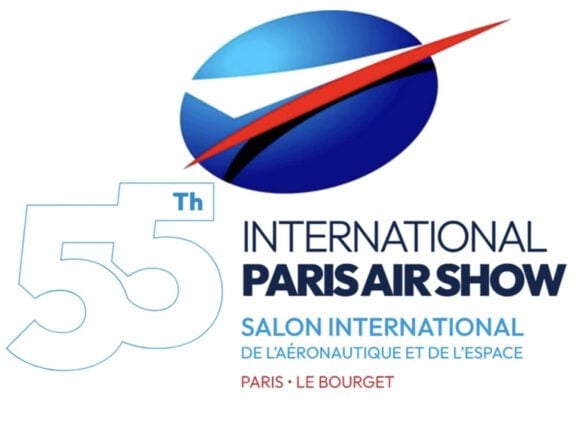
AIR e1561401683197
“As a special note this week, we are happy to share our AIR (AirInsightResearch) research colleagues latest analyst note following the Paris Airshow. AIR is the “other side” of the AirInsight Group, specializing in commercial and defense advisory & market analysis services . For more information about AIR, visit www.airdsa.com.
The AIR team rarely shares their notes in the public domain, but they are available by subscription only at AIRDSA.com. We hope you enjoy this brief sample of their insights.“
AIR75 – Uncertainty Wins The Show
Paris Air Show key takeways:
- Airbus has solid sales for A321XLR, A330NEO, wins firm orders 149 to 20. Conversions are significant and will help margins.
- Boeing has subdued event, as we were expecting earlier this month– The IAG LOI shows potential continuous support for 737MAX. BCF shows on-going strength. NMA goes MIA.
- Embraer and ATR also have solid sales at the show, Mitsubishi and Spacejet clearly fall short of expectation this time around.
- SCAF/FCAS launch and preliminary mock-up are not representative of the actual design maturity. The UK Tempest is potentially marginalized as a program and needs direction.
- A350 and 777X get shut out of the orders at the show.
- Very strong showing for CFM and the Leap X, with 1,150 orders excluding the IAG MAX LOI
- Gripen reportedly gets the boot from Switzerland’s evaluation – but still has a distant shot at a win.
- Supply chain is about to pop a fuse.
- Environmental reasonable concerns and the unreasonably obsessive discourse that goes with it.
- Electrical plane has a future, that future will need prudent and patient planning.
- US-EU potential trade spat going strong – US has legitimate concerns about access to EU defense markets for US companies but voices them in the most unreasonable fashion.
- Russo-Chinese alliance is showing stress.
- How can Paris possibly get ready for the Olympic games with such an abysmal public transport performance to and from Le Bourget site?
That Airbus vs Boeing thing to begin with…
The ritualistic examination of orders, commitments or the “just thinking about it LOIs” is one of the necessary highlights of any major shows. This year’s Salon du Bourget comes at a trying time for Boeing in the wake of the loss of two 737-8MAXes with Lion Air and Ethiopian, and the grounding of the airplane that has lasted since march and will likely extending well into late fall, early winter.
Airbus leads this year’s airshow orders 149 to 20 for Boeing. If we also tally the soft commitments and all manners of “vaporders”, Airbus is up to 363 to Boeing’s 270. The IAG letter of intent for 200 aircraft is a decent and welcome show of support for MAX but really does not do much for us, and at what cost to Boeing some will say? It certainly shows some levels of “softness” in the skyline and leads us to question the strength of some of the previous MAX orders.
No A350 orders and that’s Airbus dark spot at the show, while A330NEO gets some positive traction but certainly not enough to alleviate near term concerns. A330MRTT could be making some significant progress with the reaffirmation of the Lockheed Martin/Airbus partnership, that might be increasingly in a stronger position to capture some of the US air refueling market in light of the KC-46 program shortfalls.
While the Korean order is good for 787, it simply is not good enough for the program beyond 2023. With the heavy discounts that Boeing has reportedly offered to counter A330NEO in several 787 sales campaign we find this lack of traction for 787 to be most concerning. Boeing rating up to 14 a month is simply unsustainable with the current backlog. Hopefully, Dubai should bring some positive and possibly strong resurgence for the Dreamliner.
777X has a no show, other than a well-orchestrated folding wingtip photo op from Everett. The problems go beyond the engine and we are now looking at 2021 for an EIS. The 777-8 is being placed on life support to the benefit of the 777X-F which could be based on either 9 or 8 variants.
NMA currently stands for No Meaningful Announcements. We still hope for a 2025 entry in service but concerns abound about engine development and delays associated with supplier engagement. If we are now looking at a 2027 EIS, then clearly the entire program is missing its optimal window for market entry or may morph into something entirely different with likely more advanced materials and systems options, trading a negative (missed timing) for a positive (technology choices). Still, the suppliers are clearly getting impatient and are not shy about saying so.
SCAF/FCAS, let the transatlantic bashing commence, or rather, perdure.
Airbus and Dassault brought a scale 1 mock-up of the future combat air system to the show, a somewhat radical departure from Dassault’s past designs that reminds us a little bit of the magnificent Northrop YF-23. While not much can be said of the aircraft at this juncture, the internal storage capabilities will be impressive, together with a likely thrust vectoring pair of jointly developed engines from MTU and Safran. Our conversations with Dassault have also indicated a much stronger design maturity than perhaps was to be expected at this stage of development. While we anticipate an IOC for 2038, a demonstrator first flight is scheduled for 2026. In parallel, our discussions have confirmed that Rafale is on a strong upgrade path to legitimately transition to a 5th generation badge with enhanced sensor fusion, cockpit, weapon system and UCAV teaming by 2028. The expected F4 and F5 variants will see service until 2050.
While Rafale F3R has completed an initial evaluation with the Swiss air force, The Gripen E team has reportedly been “desinvited” by Armasuisse but will likely remain in the competition. Still, we view this as a serious disadvantage in a race that is now likely either Rafale or F-18E to lose.
The supply chain is stressed – and not just about the rates
Meetings with Tier 1s and 2s at the show have, again, highlighted recurring concerns from the supply chain about the state of the industry forward and ongoing OEM cost and schedule pressures. The UTC/Raytheon potential teaming up is raising concerns at the tier 1 and 2 levels in particular, with questions being asked about the need to accelerate possible moves to strengthen product or systems offering (shipsets), but to also be able to have sufficient leverage to compete against these behemoths. Fall should see a particularly active M&A landscape with rationalization of what was recently Esterline being completed, and players such as Premium Aerotech, Woodward, Crane, Daher and others looking for their next moves. In all, the primary indirect issues of concern for the supply chain are the potential rising impact of the trade wars and the increasing potential for a geopolitical event that might disrupt this up-cycle. Private equity is also very active and there is notably more capital than companies with high multiples (12 to 14 X EBITDA) for aerospace suppliers.
Environment: legitimate effort needed with irrational media discourse
Greenhouse gas emissions are at the forefront of the social and industrial debates. Propelled by a mix of entirely justified environmental necessities on one end, and interest groups hysterics on the other hand, it has become therefore a challenging act for the aerospace industry and airlines to shape their communication effectively in the age of twitter enabled intolerance.
Air transport is responsible for a significant volume of CO² emissions, but certainly lags behind the datacenter, mobile phone and car industries. In short, millennials’ addiction to everything youtube or netflix is doing significantly more harm to the planet than a 787 or an A350.
Still, the aerospace industry and its leadership are keenly aware than more must be done to ensure that the contribution of the airplane to greenhouse gases does not go past the point of no return and that carbon neutrality is achievable sometime in the late 21st century. Few industries have done more to reduce their fossil fuel consumption and carbon footprint, driven primarily by business & operational necessities. Neutrality regrettably cannot happen overnight, it takes new engines, new avionics, new procedures to direct aircraft more efficiently within the required levels of safety and reliability. The train is clearly a more environmentally acceptable way to travel than car or plane, but lack of high speed railway investments in the US in particular has been highly detrimental to a reduction of greenhouse gas emissions. The message is being hijacked by ideologically motivated groups, and it is clearly up to the industry to ensure that their voice is not being silenced by manipulated children watching ever more cute kitties or gamers videos…
The electrical plane is making progress but will take time to get to levels required to make a significant impact. There was positive development at the show such as MagniX and Eviation and we are encouraged that general aviation, very short haul cargo and regional passenger transport may be able to deliver near carbon neutral very short-range travel by the late 2020s, and NOT before. A two hour flight for 200 passengers is however unlikely to be feasible until 2050.
China takes the lead
C919 and CR929 remain somewhat on course with C919 EIS still expected for late 2021 and CR929 for 2027. We are however concerned that the role of the Russian industry is being reduced in the case of CR929, which would leave the Russian assembled version of the aircraft with a smaller than anticipated market access. If the wing production is indeed moved to Xi’an for Chinese assembled aircraft, it will be a major blow for what could always be described as a tenuous Sino-Russian collaborative effort.
To recap
The show delivered what we were expecting: no large orders, confirmation of the A321NEO dominance in the middle of market, a quiet and isolated show for Boeing with minor and (important) positives. The show very much felt like an intersection. Much is going to impact the industry over the next 12 to 24 months from a likely slowdown of the US economy, geopolitical and trade tensions and the MAX grounding regulatory consequences. The industry is in the strongest fulfillment phase of its history but is also pausing to reflect on what is next, as elements ranging from trade to the environment could reshuffle the cards, possibly violently, in the next 24 months.
Views: 2


